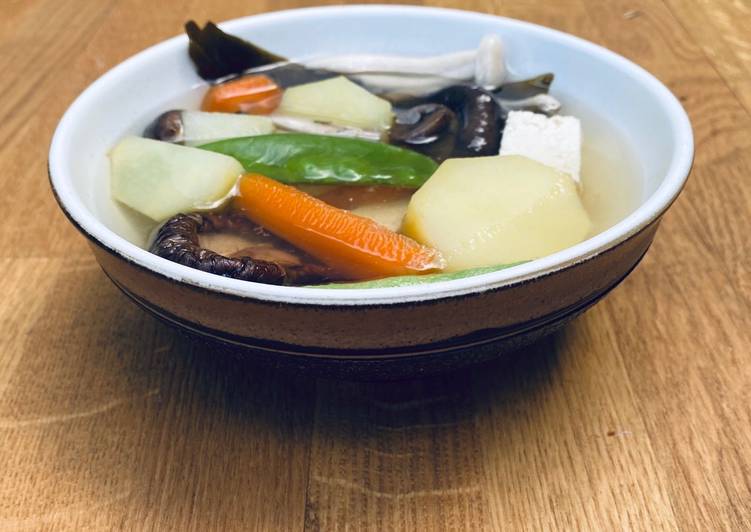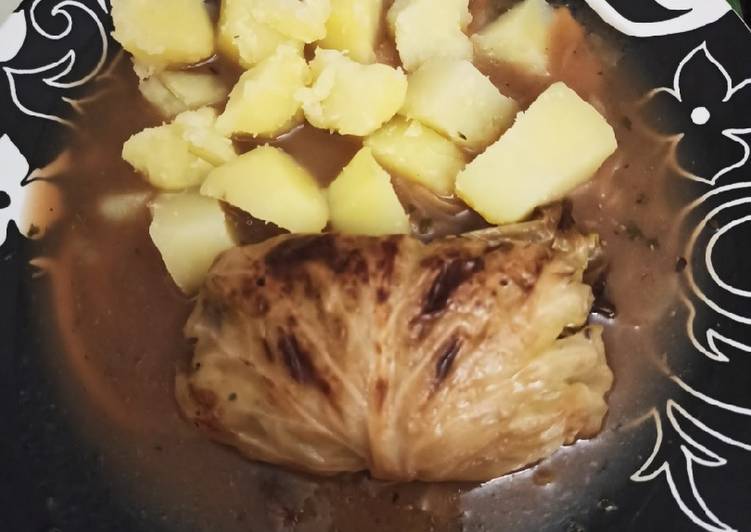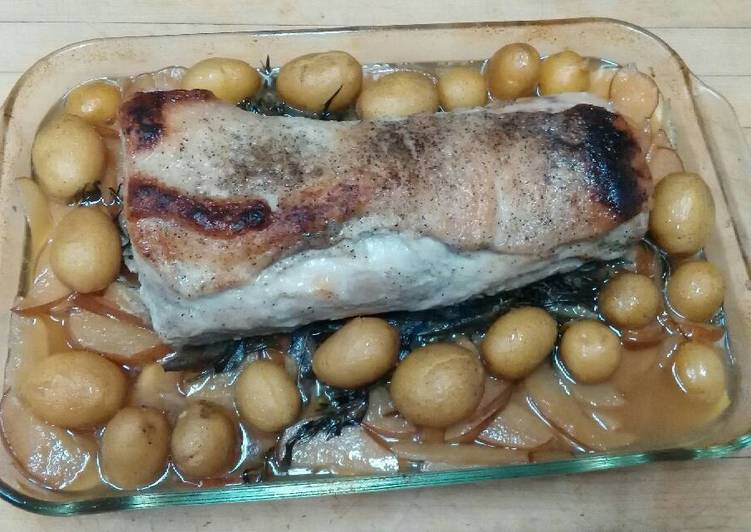
Hey everyone, it’s me again, Dan, welcome to our recipe site. Today, I will show you a way to make a special dish, kenchinjiru (shojin ryori) japanese veggie soup 🌱. One of my favorites. For mine, I am going to make it a bit tasty. This will be really delicious.
Mushrooms (enoki, oyster, chestnut), tofu (medium cut into squares), mushrooms, carrots, chinese cabbage, root veg or squash, seasonal green veg, daikon/mooli (i used pink radish), soy sauce (optional), squash, dashi, shiitake mushroom, kombu seaweed, water. Kenchinjiru is a flavorful vegan soup created originally as a Buddhist temple cuisine (精進料理) with root vegetables and shiitake and kombu stock. While most Japanese cooking requires fish-base stock "dashi", this soup uses kombu and shiitake mushrooms to flavor the soup.
Kenchinjiru (Shojin Ryori) Japanese Veggie Soup 🌱 is one of the most popular of current trending foods in the world. It is enjoyed by millions every day. It is simple, it’s fast, it tastes delicious. Kenchinjiru (Shojin Ryori) Japanese Veggie Soup 🌱 is something which I’ve loved my entire life. They are nice and they look wonderful.
To get started with this recipe, we have to prepare a few components. You can cook kenchinjiru (shojin ryori) japanese veggie soup 🌱 using 14 ingredients and 3 steps. Here is how you cook it.
The ingredients needed to make Kenchinjiru (Shojin Ryori) Japanese Veggie Soup 🌱:
- Make ready Mushrooms (enoki, oyster, chestnut)
- Get Tofu (medium cut into squares)
- Prepare Mushrooms
- Make ready Carrots
- Make ready Chinese cabbage
- Get Root veg or squash
- Take Seasonal green veg
- Prepare Daikon/mooli (I used pink radish)
- Take Soy sauce (optional)
- Get Squash
- Take Dashi
- Make ready Shiitake mushroom
- Take Kombu seaweed
- Make ready Water (just enough to cover veggies)
Japanese Vegetable Soup (Kenchinjiru) was originally a Buddhist dish that is vegetarian. Root vegetables and tofu are sautéed and cooked in flavoured dashi broth. This classic Japanese soup is hearty yet low in calories, full of fiber, and just all around good for The name kenchinjiru (けんちん汁)derives from the Zen Buddhist temple where it was first made (or so it's Since kenchinjiru is a shojin ryouri or temple cuisine dish, the basic version given here is vegan. Japanese Rich Vegetable Miso Soup, Zen Buddhist Cuisine for Vegan in Japan (Shojin Ryori)
Steps to make Kenchinjiru (Shojin Ryori) Japanese Veggie Soup 🌱:
- Prepare the Dashi stock by washing and then soaking the shiitake and kombu for at least an hour. Then heat for 15 minutes but don’t boil. If you taste it should already taste delicious. This is such an important part of the recipe and gives the umami taste.
- Cut the veg into similar sized pieces. This is important in zen cooking As it allows the veg to cook for the minimum amount of time and retain nutrients. Add a few squares of medium or firm tofu. You can use a soft tofu but add at the last minute or it will crumble.
- Simmer the veg in the Dashi until cooked. Only use just enough to cover the veg to help retain the nutrients of the vegetables. Don’t overcook, they should still have some bite. Add soy sauce to taste if using.
Kenchinjiru けんちん汁. · Miso Nikomi Udon is a hearty and comforting noodle soup where chicken, fish cake, and udon noodles are simmered in a miso-flavored dashi broth. Kenchinjiru is a clear soup with a lot of vegetables. This meatless but hearty hot soup is a great dish in colder weather, and perfect to serve a big crowd for various gatherings in fall and winter. There is a lot of cutting involved, but it is quite easy and simple to make. Perhaps the most elegant comes from the Buddhist monasteries of Japan, the birthplace of shojin ryori cuisine.
So that’s going to wrap this up for this special food kenchinjiru (shojin ryori) japanese veggie soup 🌱 recipe. Thank you very much for your time. I’m confident you can make this at home. There’s gonna be more interesting food at home recipes coming up. Remember to save this page on your browser, and share it to your loved ones, colleague and friends. Thanks again for reading. Go on get cooking!


